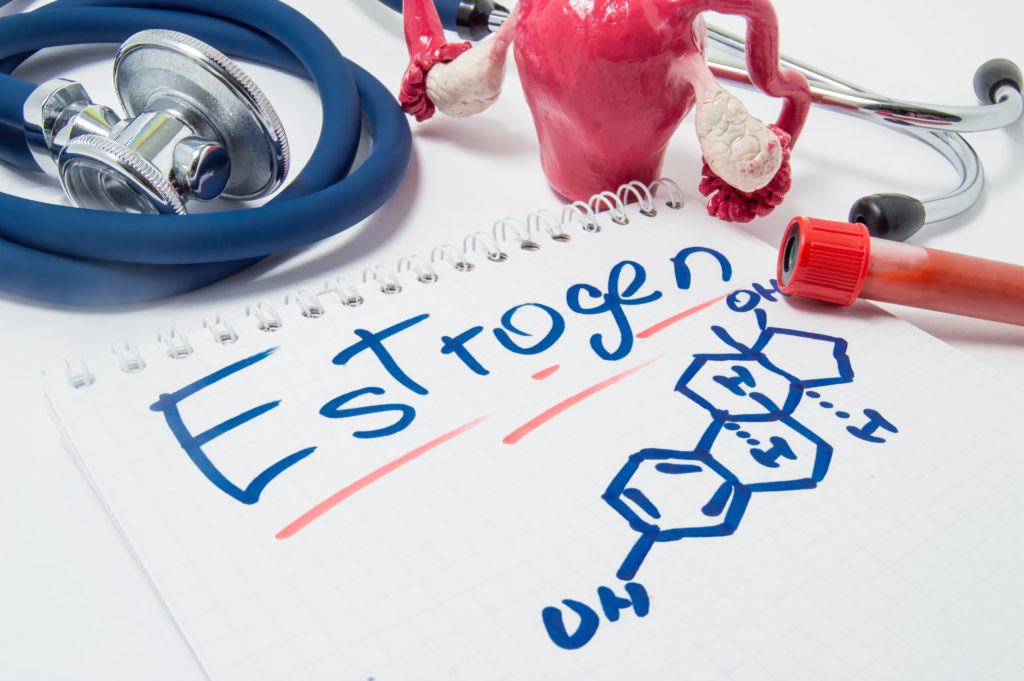
PSR has been publishing articles on the often-overlooked concept of women and psychedelics. One article from December 2019, Female Hormones, 5-HT2A Receptors, and Psychedelics, summarized several scientific studies investigating this concept. This article is a more detailed look into one of those studies.
Estrogen increases the density of 5-Hydroxytryptamine2A receptors in cerebral cortex and nucleus accumbens in the female rat.
In this study from 1995, the researchers wanted a better understanding of how estrogen (aka estradiol, the major estrogen made by the ovaries) affected the serotonin 5-HT2A receptors in the brain1 (the main receptor involved in the psychedelic effect). They knew from their previous work that estrogen caused a massive increase in the expression of the mRNA in the rat brain that codes for the 5-HT2A receptor.2 Also, scientists knew at that time that estrogen might play a role in memory, but they had little understanding of how it elicited its effects.
Study Design
The study used twelve adult female rats that had their ovaries removed when they entered diestrus (non-breeding cycle). Six rats immediately received a subcutaneous injection of 30 µg estradiol benzoate (EB)(a salt form of estrogen) in 0.2 ml of Arachis oil. Six control rats received only 0.2 ml of Arachis oil.
The next morning the rats were dispatched, their brains removed, and their blood analyzed for levels of luteinizing hormone (LH) (Estrogen causes the release of LH, which triggers ovulation. The researchers had to make sure the EB did the same thing in the rats.). The blood testing revealed that the EB has significantly stimulated the release of LH.
Brain sections from the EB and control rats were fixed, stained, and incubated with radioactive 3H-ketanserin hydrochloride (ketanserin is an antagonist that binds to 5-HT2A). The researchers also added a drug called prazosin to prevent the EB from binding to the α1-adrenergic receptors.
After incubation, the sections were dried and placed on silver 3H photographic film and exposed for five weeks. The density of the silver grains on the film (and hence the density of 5-HT2A receptors) was measured using autoradiography.
The Results – Estrogen Increased 5-HT2A Receptor Density in the Brain
All six EB treated rats showed significant increase (shown in parentheses) in the 5-HT2A receptor density in the anterior frontal cortex (96%), anterior cingulate cortex (89%), piriform cortex (72%), claustrum (63%), nucleus accumbens (56%), olfactory tubercle (53%), anteroventral part of the periventricular nucleus (43%), and the dorsal raphe nucleus (36%). These regions in the brain are concerned with emotion, cognition, and neuroendocrine and motor control, among other functions.
The authors also noted that the density of 5-HT2A binding sites corresponded closely with the concentrations of mRNA for the receptor found in the literature. They also stated that this was the first experimental evidence that estrogen increases 5-HT2A receptor density in the cerebral cortex and nucleus accumbens.
As part of their previous study, the authors did a preliminary version of this experiment using a lower dosage of 10 µg EB.2 Comparing to this study, the results intriguing. Four of the six test EB rats had an increased density of 5-HT2A receptors in the frontal cortex. Three of the six EB rats had receptor increases in the cingulate cortex.
The Relevance of the Study Results
In their discussion, the authors review the literature and discuss how their study results relate to several women’s health and mental health conditions. Here are some of their insightful analysis and hypotheses:
- Their data raise the possibility that some of the symptoms of puerperal psychosis (aka post-partum depression) may involve 5-HT2A
- A mechanism involving 5-HT2A may be related to a later onset of schizophrenia in women compared to men (they note the “second peak of onset” of schizophrenia in women after the age of 40).
- Citing previous studies showing that estrogen induces progesterone (another major female hormone) receptors in the brain, the authors propose that the action of estrogen could be mediated (at least in part) by progesterone.
- The authors suggest that men and women are different in terms of how their brains perform the same function:
…the major genetic differences between the two sexes may result in major differences in the central neurotransmitter mechanisms.
SSRIs (selective serotonin reuptake inhibitors) antidepressants were still a rather new phenomenon in 1995. Scientists didn’t (and still don’t) have a solid understanding of how they work. In any case, at the time, the authors proposed a connection between the density of 5-HT2A receptors in the brain and premenstrual syndrome (PMS):
The data provide a rational explanation for the fact that the administration of estrogen or 5-HT uptake blockers, such as fluoxetine (‘Prozac’), are effective in the treatment of the depressive symptoms of the premenstrual syndrome.
They added:
The data may also explain why estrogen therapy was effective in reducing significantly the severity of symptoms in women with persistent major depressive disorder, and why 5-HT2 receptors have been implicated in suicide.
